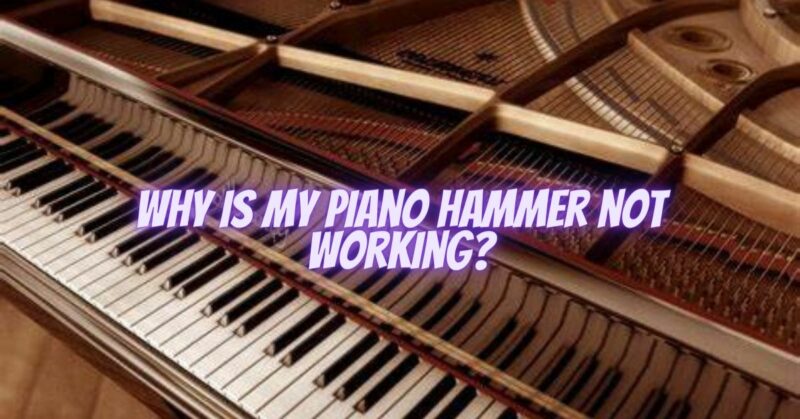The piano hammer is a critical component responsible for striking the strings and producing sound. If a piano hammer is not working properly, it can significantly impact the instrument’s playability and sound production. In this article, we will explore some common reasons why a piano hammer may not be functioning correctly and provide insights into resolving these issues.
- Misalignment or Sticking: Misalignment or sticking of the piano hammer can prevent it from properly striking the strings. This can occur due to various factors, including humidity changes, debris accumulation, or wear and tear. If the hammer is misaligned or sticking, it may require adjustments or cleaning to restore its functionality.
- Worn Felt or Leather: Over time, the felt or leather on the piano hammer can wear out or become compressed, resulting in reduced striking force or uneven sound production. This can affect the hammer’s ability to produce a consistent and desirable tone. If the felt or leather is significantly worn, it may need to be replaced by a qualified piano technician.
- Damaged or Broken Components: Damage to the piano hammer components, such as the shank, flange, or knuckle, can cause a hammer to stop working effectively. If any of these parts are broken or damaged, they may need to be repaired or replaced by a professional piano technician.
- Weak or Broken Hammer Spring: The hammer spring provides the necessary tension and return force to the piano hammer. If the spring is weak or broken, the hammer may not be able to return to its resting position properly or generate sufficient striking force. Replacing the hammer spring may be necessary to restore functionality.
- Loose or Broken Hammer Butt: The hammer butt connects the hammer to the piano’s action mechanism. If it becomes loose or broken, the hammer may not respond correctly when keys are pressed. Tightening or replacing the hammer butt may be required to address the issue.
- Damaged or Misaligned Hammer Rail: The hammer rail is the part of the piano’s action mechanism that supports and guides the hammers. If the hammer rail is damaged or misaligned, it can hinder the proper movement of the hammers, resulting in non-functioning hammers. Repairing or adjusting the hammer rail may be necessary to resolve the issue.
Conclusion: A non-functioning piano hammer can greatly affect the playability and sound production of the instrument. Understanding the potential causes, such as misalignment, worn components, or damaged parts, is crucial in diagnosing and resolving the issue. It is recommended to consult a qualified piano technician for a thorough assessment and appropriate repairs. With their expertise and knowledge, they can identify the specific problem and provide the necessary adjustments, repairs, or replacements to restore the functionality of the piano hammer. Regular maintenance and prompt attention to issues will help ensure optimal performance and longevity of your piano.


